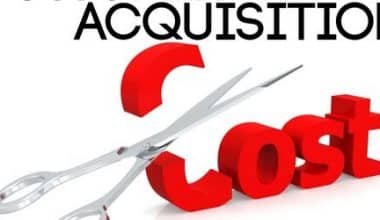Have you ever invested in a company? If so, you’ve become a shareholder. But there’s a whole other group of people with a vested interest in how that company runs: stakeholders. These terms get tossed around a lot, but what’s the real difference? Understanding this distinction between stakeholder and shareholder is key to navigating the world of corporate governance. We’ll break it down for you.
Shareholders are like those with a front-row seat. They directly own a piece of the company through stock, and their main concern is seeing that investment grow. They want the company to make decisions that boost the stock price and generate a healthy profit.
Stakeholders, on the other hand, have a broader view. They’re anyone impacted by the company’s decisions, from employees and customers to local communities and the environment. Their interests are more diverse, and they might care about things like fair wages, sustainable practices, and the company’s overall reputation.
So, while shareholders are stakeholders, not all stakeholders are shareholders. This difference in perspective shapes how companies are run. Buckle up, because we’re about to go into the two main approaches to corporate governance: the shareholder theory and the stakeholder theory. We’ll explore their models, priorities, decision-making styles, and the potential benefits and drawbacks of each.
Key Point
- Understanding the difference between the two is crucial because it affects how you make decisions.
- One of the primary goals of being a shareholder is to maximize my financial returns.
- Corporate governance, a term often relegated to the realms of specialized discourse, carries profound implications for how businesses are operated and managed.
- While shareholder theory focuses narrowly on financial gains for shareholders, stakeholder theory acknowledges the interconnectedness of business with society and the environment.
Alright, so let’s talk about shareholders versus stakeholders. It’s a common mix-up, but they’re not the same thing at all. See, a shareholder, that’s someone who owns stock in your company. It’s like owning a piece of the pie, so to speak. On the other hand, a stakeholder, well, they’re a bit broader. They’re not necessarily owners, but they’ve got skin in the game, you know? They’re impacted by what’s happening in your business, like if you’re launching a new project or making big decisions.
Now, the thing to remember is that while shareholders are stakeholders, not all stakeholders are shareholders. It’s like squares and rectangles – all squares are rectangles, but not all rectangles are squares. Same idea here.
So, when you’re thinking about shareholders, you’re thinking about financially invested folks. They want to see their investment grow and make some profit, you get the drift. But stakeholders, they’re a whole mix of people – customers, employees, communities, and even the environment. They’ve all got a stake in what you’re doing, whether it’s buying your products, working for you, or living in the area where your business operates.
Understanding the difference between the two is crucial because it affects how you make decisions. Now, let’s properly go into detail about the difference between shareholder and stakeholder.
Ever wondered who those people are who cash in when a company does well? That’s me, a shareholder, also known as a stockholder. If you buy shares of a company, you’re buying a tiny piece of it. The more shares you own, the bigger your slice of the pie.
As a shareholder, I essentially own a piece of a company. When I purchase shares through a brokerage account, I’m investing in the company’s ownership. This ownership grants me certain rights and benefits. One of the primary goals of being a shareholder is to maximize my financial returns. Therefore, I’m naturally interested in the overall performance of the company, as it directly impacts the value of my shares. When the company performs well, the stock prices rise, presenting an opportunity for me to sell my shares at a profit.
Moreover, being a shareholder comes with additional perks depending on the type of shares I own. For instance, I may receive dividends, have the right to vote on important company decisions such as mergers or acquisitions, and participate in the election of members to the company’s board of directors. However, the influence I wield through my voting rights is determined by the number of shares I own. Consequently, larger investors hold more sway over the company’s strategic direction.
Moving on to the types of shareholders, there are two main categories: common shareholders and preferred shareholders.
If I own common stock, I’m a common shareholder. This means I have a shot at higher returns in the long run, plus I get a say in how the company is run. That’s right, I get to vote on important decisions like mergers and acquisitions, and even who gets to be on the board of directors. The more shares I have, the louder my voice on these matters. Of course, with great power comes great responsibility (sort of). As a common shareholder, I take on a bit more risk. If the company folds, I only get paid back after a bunch of other folks, like bondholders, get their cut. In the event of liquidation, common shareholders can only claim assets after bondholders, preferred shareholders, and other debtholders have been paid.
Preferred shareholders, on the other hand, own preferred stock. They typically get guaranteed dividend payments every year, like clockwork. These payouts might not be as high as what common shareholders can potentially make, but they’re a sure thing. The trade-off? Preferred shareholders usually don’t get to vote on company matters. They miss out on influencing the company’s direction, but they also take on a bit less risk. If things go south and the company goes belly up, they get their money before common shareholders do.
Being a shareholder entails owning a portion of a company, to maximize financial returns. The type of shares I own, whether common or preferred, determines the rights and benefits I enjoy, as well as the level of risk I undertake.
What is a Stakeholder?
You know that feeling when you’re working on a group project and suddenly realize everyone involved has a different opinion or concern? That’s stakeholders in action! In the project management world, stakeholders are anyone who can affect or be affected by the project I’m working on. It sounds complicated, but it means anyone with a stake in the outcome.
This isn’t just about my teammates directly involved in the nitty-gritty work. Stakeholders can be all over the place, from the bigwigs at the top (think CEOs and company shareholders) who care about how the project impacts stock prices, to external folks we collaborate with, like an agency helping us plan a big event. Even the customers we’re ultimately creating the project for can be stakeholders – if their needs and preferences directly influence what we’re building. Here’s the thing: stakeholders come in two flavors – internal and external.
#1.Internal Stakeholders
Internal stakeholders are the folks closest to the project, like my awesome teammates and collaborators from different departments. They might even be within the company, but not always. Shareholders, for example, are considered internal stakeholders because they’re financially tied to the company through their stock ownership. So, if a project impacts the stock price, it directly impacts them too.
While many internal stakeholders are employed within the company, this isn’t always the case. Shareholders, for instance, are considered internal stakeholders due to their association with the company through the ownership of stocks. Consequently, they’re directly affected by projects that influence stock prices.
#2. External Stakeholders
External stakeholders are on the outside looking in, like our customers, the people who will ultimately use what we create, and even our suppliers. Even though they’re not part of the company itself, the project still touches their world in some way. Take a manufacturing project, for instance.
Conversely, external stakeholders are those who lack a direct affiliation with my company. This category encompasses customers, end users, and suppliers, among others. Despite their external status, the projects I undertake still impact them in various ways. For instance, if I were to initiate a manufacturing project, it would necessitate additional resources from suppliers, highlighting their stake in the endeavor.
In essence, stakeholders represent a broad spectrum of individuals and entities with vested interests in the outcomes of my projects. Recognizing and understanding these stakeholders, both internal and external, is imperative for effective project management and fostering successful collaborations.
Let’s talk about shareholder theory and stakeholder theory. Now, I’m no expert, but I’ve been digging into this, and here’s what I found.
Imagine a company’s main goal is making the most money possible for its shareholders, the folks who own stock. That’s the core of shareholder theory. It sounds good, right? Aligns everyone with the same financial target, keeps management accountable – win-win!
But hold on. See, theory and reality often clash. Shareholder theory, in practice, can have some nasty consequences. Remember the 2008 financial crisis? Yeah, some research suggests shareholder focus might have played a part. Here’s why:
Now, stakeholder theory throws a wrench into things. It says companies should consider everyone who has a stake in the business, not just shareholders. Employees, customers, communities – they all matter. Sounds good, but there’s a catch: stakeholder theory can be fuzzy. It’s harder to define clear goals when you’re juggling so many interests.
Here’s the thing: even though stakeholder theory might be a bit trickier to implement, research suggests shareholder focus can have some brutal side effects. And let’s be honest, complete trust in every corporate leader feels a bit naive, right?
Look, I’m not an economist or an ethics guru. Take this with a grain of salt, disagree with me if you want! But based on what I’ve seen, stakeholder theory, with its focus on the bigger picture, seems like the way to go. It might be messier, but it could lead to a more responsible and sustainable way of doing business. After all, a company isn’t an island – it exists within a community, and its actions have consequences.
Shareholder theory, also dubbed the Friedman doctrine, essentially asserts that a company’s primary obligation lies in maximizing profits for its shareholders. This concept, pioneered by economist Milton Friedman, suggests that a business owes no allegiance to the broader society, focusing solely on the interests of its shareholders. In practical terms, this means companies are encouraged to prioritize actions that enhance shareholder wealth, without diverting resources towards social or charitable endeavors unless directly beneficial to shareholder returns.
Imagine you’re running a company. Shareholder theory says my top priority, above all else, is to make money for the people who own parts of the company, the shareholders. Milton Friedman, came up with this idea. He believed companies shouldn’t worry about social causes or anything besides boosting shareholder profits. My job is to deliver the biggest returns possible, and if that means saying no to charitable donations or environmental initiatives, so be it. In Friedman’s view, those are individual choices, not corporate ones.
What is Stakeholder Theory?
Stakeholder theory advocates for a broader perspective. It posits that businesses should consider the needs and interests of all stakeholders, both internal and external. This includes not only shareholders but also customers, employees, suppliers, and the communities affected by the company’s operations. According to this theory, a company’s success is intricately linked with its ability to create value for all stakeholders, fostering a sustainable and mutually beneficial relationship.
While shareholder theory focuses narrowly on financial gains for shareholders, stakeholder theory acknowledges the interconnectedness of business with society and the environment. By prioritizing the well-being of all stakeholders, including shareholders, businesses can contribute positively to society while also achieving long-term profitability and sustainability.

There’s a common misconception floating around about shareholders and stakeholders, and I’m here to clear it all up. These terms might sound similar, but trust me, they’re not the same game.
#1. Different Objectives
As a shareholder, I’m all about maximizing my investment. I want to see the company raking in cash, which translates to bigger dividends for me and a nice boost to my stock value. That means short-term wins that pump up the share price are my jam.
Now, stakeholders are a different breed. They care about the company’s success too, of course, but not just for the financial gain. Take the employees, for instance. They want the company to thrive because it means job security and a chance to climb the career ladder. Customers? They’re all about getting a fantastic product and stellar service. Suppliers? They just want a long-term, healthy partnership that benefits both of us.
#2. Ownership of the Company
Here’s the kicker: I, the shareholder, can be a stakeholder too. If I own stock in the company, then I care about its overall well-being. But that’s not always the case. Plenty of people are impacted by a company’s decisions without owning a single share. Think about the local community – they’re stakeholders because the company’s actions could affect the environment or job market.
#3. Distinct Timelines
Now, let’s talk timelines. My focus, as a shareholder, is pretty short-term. I can ditch my stock any time and move on to the next big thing. That means I might be pushing for decisions that get a quick financial bump, even if they hurt the company down the line.
Stakeholders, on the other hand, are in it for the long haul. Employees want a sustainable company they can grow with. Customers want a brand they can rely on for years to come. Suppliers crave a stable partnership. Their success is tied to the company’s long-term health, not just quarterly reports.
Understanding these differences is key. As a company, we need to consider the needs of all our stakeholders, not just the shareholders looking for a quick buck. It’s about striking a balance between short-term gains and sustainable growth that benefits everyone involved. After all, a happy community of stakeholders leads to a happy, thriving company – and that’s something we can all get behind.
Corporate governance, a term often relegated to the realms of specialized discourse, carries profound implications for how businesses are operated and managed. It essentially delves into the intricate web of ownership, control, and management within a corporation.
At its core lie two predominant models: the shareholder model, which prioritizes the interests of shareholders seeking returns on their investments, and the stakeholder model, which broadens the spectrum of interests to encompass various stakeholders beyond just shareholders.
Let’s first dissect the shareholder model, emblematic of the corporate landscape in the United States. Here, the allure lies in the liquidity of capital markets, facilitating the accessibility of venture capital. However, this accessibility comes with its own set of caveats. Private equity firms, major players in this domain, mitigate risk by diversifying portfolios, often at the expense of singular investment dedication.
Consequently, the shareholder model tends to foster a climate where social protections are diminished, and CEO compensation escalates unchecked, contributing to the pervasive wage inequality plaguing the nation.
Furthermore, the shareholder-centric ethos translates into a corporate milieu where management enjoys considerable autonomy, often to the detriment of employee representation. Mergers and acquisitions unfold swiftly, with scant oversight from directors or boards, relegating labor to a peripheral role in decision-making processes.
This short-term focus on shareholder gains also disincentivizes long-term investments in human capital, favoring higher education over apprenticeships and fostering an environment of labor market flexibility at the expense of employee safeguards.
The Stakeholder Model
The stakeholder model, prevalent in Germany, espouses a more inclusive approach to corporate governance. Here, stakeholders span a diverse spectrum, encompassing investors, customers, and even employees. Ownership tends to be more concentrated, primarily in the hands of ‘insiders’ such as families, banks, and other firms. Central to this model is the pivotal role banks play, wielding substantial equity stakes and actively monitoring firms, often with representation on the board.
German corporate governance is characterized by codetermination, affording workers, management, and investors a voice on the board. This collaborative oversight fosters a more egalitarian wage structure, particularly evident in middle-management tiers. Moreover, the stakeholder model is conducive to fostering ‘patient’ capital, underpinning a long-term orientation that encourages investments in training programs, bolsters employee retention, and shields against hostile takeovers, thereby fostering a harmonious industrial relations environment.
However, the expansive nature of the stakeholder model isn’t devoid of criticism. Some argue that the multitude of stakeholders may engender conflicting interests, potentially impeding decisive action or hindering efficient decision-making processes.
In essence, the dichotomy between the shareholder and stakeholder models underscores the multifaceted nature of corporate governance. While the former prioritizes shareholder returns and managerial autonomy, the latter embraces a broader array of stakeholders, fostering inclusivity and long-term sustainability. Each model embodies a distinct ethos, leaving an indelible imprint on the corporate landscapes they govern.
Look, shareholders are the backbone of any company, their investments keep us running. But as someone in the trenches, I gotta tell you, that stakeholder theory is the real key to long-term success. Here’s why.
Shareholders tend to focus on the here and now, the quick wins that make the stock price jump. This can be tempting, but trust me, sacrificing company culture, good relationships with suppliers, and happy customers to chase a short-term bump isn’t sustainable.
Stakeholder theory flips the script. It reminds us that our success hinges on everyone involved. Happy employees mean a better work environment, which leads to better service for customers. Suppliers we treat well become reliable partners. It’s a domino effect but in a good way.
Think about your team. Research shows most employees feel unheard. Stakeholder theory changes that. By prioritizing everyone working on the project, both inside and outside the company, we create a space where everyone feels valued. This translates to a more motivated team, which is the real secret sauce to getting projects done well. In short, stakeholder theory isn’t about chasing a quick buck, it’s about investing in the future, in the people who make the company thrive.
In the intricate landscape of corporate dynamics, the question of whether a shareholder inevitably embodies the role of a stakeholder arises. Simply put, yes, a shareholder invariably assumes the mantle of a stakeholder within a corporation’s framework. However, it’s crucial to discern that while every shareholder holds stakeholder status, not every stakeholder necessarily assumes the role of a shareholder.
When one delves into the essence of shareholder status, it becomes apparent that shareholders are individuals or entities who possess ownership in a public company, typically represented by shares of stock. This ownership imbues them with vested interests in the company’s performance, primarily tied to stock performance and financial gains.
On the flip side, stakeholders encompass a broader spectrum. They comprise entities or individuals with a vested interest in the corporation’s well-being, driven by motives beyond mere financial gains. These motives could range from environmental concerns to community welfare or employee rights. Stakeholders, thus, harbor multifaceted aspirations, striving for the company’s prosperity on diverse fronts.
In essence, while all shareholders are stakeholders by their ownership, stakeholders encompass a broader cohort, inclusive of individuals and entities with varied interests and concerns, transcending the realm of financial gains alone.
This one’s pretty straightforward. See, all shareholders are investors, but not all investors are shareholders. Let me explain.
I buy shares in a company. I become a shareholder. That makes me an investor for sure. My money’s on the line, hoping the company does well so my shares go up in value. That’s the investor part.
But there are other ways to invest. Maybe I loan a company money directly and become a creditor. Investor? Absolutely. Shareholder? Nope, no shares are involved here.
So, the shareholder is a specific type of investor. We put our money into a company by buying shares, basically betting on their success. It’s a good way to grow your wealth, but it’s just one investing strategy out there.
Conclusion
In conclusion, the debate between stakeholders and shareholders is not a matter of one versus the other, but rather a recognition of their interconnectedness in the modern business landscape. While shareholders traditionally hold a primary interest in maximizing profits and returns on investment, stakeholders encompass a broader spectrum, including employees, customers, communities, and the environment.
Today’s businesses are increasingly understanding the importance of considering the interests of all stakeholders, recognizing that long-term success relies on more than just financial gains. By adopting stakeholder-oriented approaches, companies can enhance their reputation, foster innovation, and mitigate risks associated with environmental and social issues. Moreover, prioritizing stakeholder interests aligns with evolving consumer preferences and regulatory pressures, further emphasizing its significance in sustainable business practices.
However, striking a balance between shareholder and stakeholder interests remains a challenge, requiring careful navigation and strategic decision-making. Ultimately, businesses that embrace a holistic approach, valuing both shareholders and stakeholders, are better positioned to thrive in an ever-changing global economy, driving positive societal impact while ensuring sustainable growth and profitability.
- SHAREHOLDERS AGREEMENT: What Is It & the Purpose?
- BUSINESS LAWYER: What They Do & How To Hire One
- Stakeholder Engagement: How to Plan an Effective Engagement Strategy






